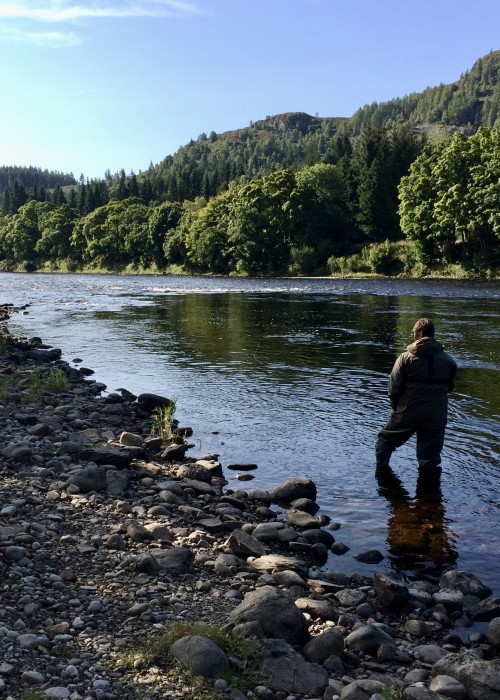
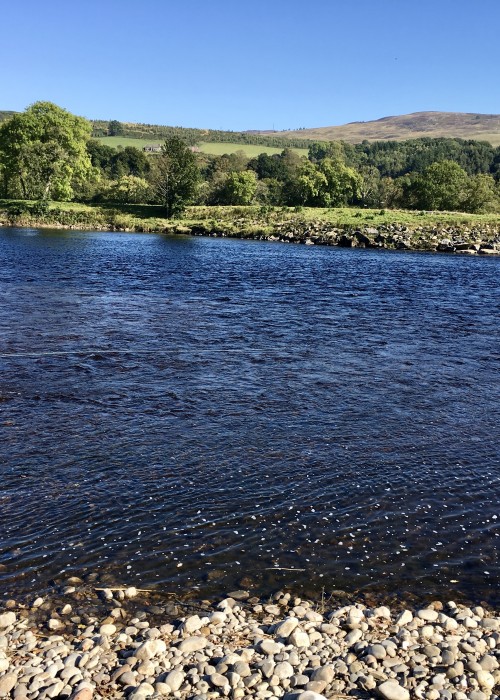
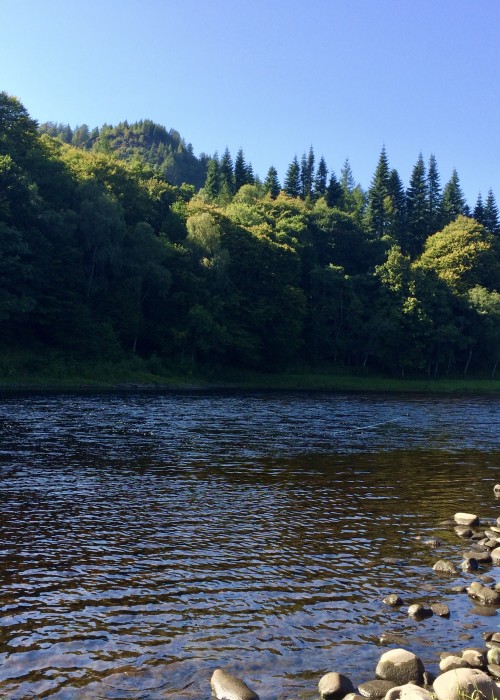
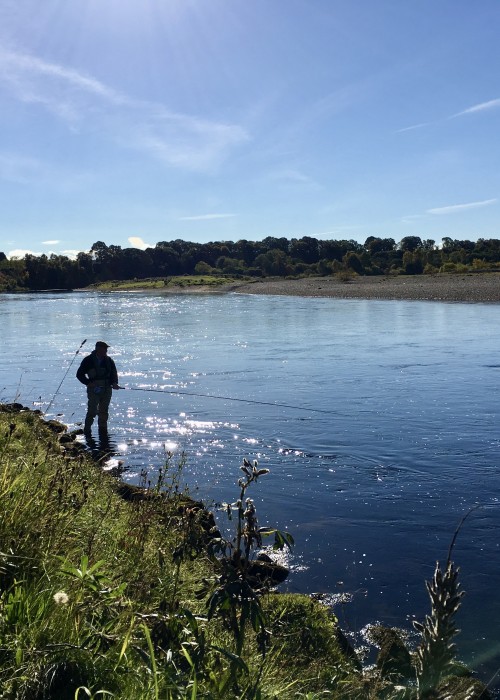
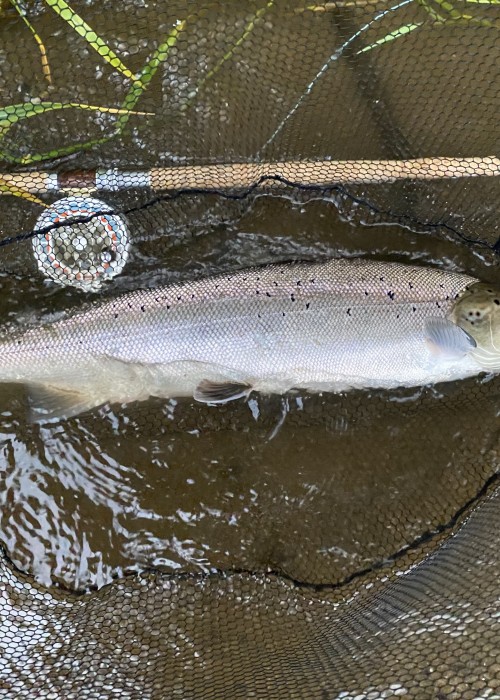
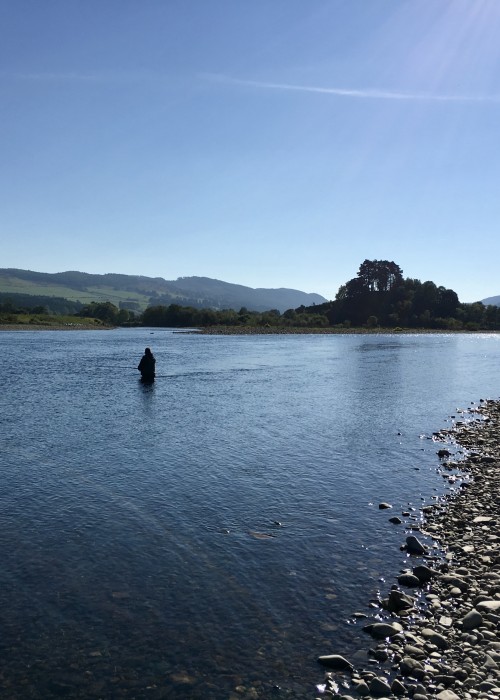
Professional salmon fishing guide Jock Monteith's assessment of the different types of salmon fly fishing available in Scotland on the 4 major Scottish salmon rivers; Tay, Spey, Dee & Tweed.
Salmon fishing in Scotland mainly involves the use of a double handed fly rod of varying lengths and actions. There are still numerous professional guides who understand the fly control benefits of fishing with a longer 15ft-16ft rod with a long tapered mendable Spey Line where longe range fly speed control is easier to deploy even though the entire market has largely shifted onto the use of shorter 13ft-14ft rods fished with shorter less controlable Shooting Head & Skagit lines in recent decades.
Both of the above fly fishing 'systems' are popular and catch salmon however if targetting long range salmon (which professional guides often have to do) then the longer rods and longer tapered Speylines will always give a fishing advantage at times when presenting a slow paced long range cold water salmon fly is important. Tackle manufacturers tend to keep coming up with the latest greatest thing but sometimes (like with most things) technology doesn't move that quickly to justify this constantly overhaul marketing/design approach. My late salmon fishing mentor & great friend Peter Anderson used to say 'does that mean they got it wrong the year before'! which best summarises my own thoughts on this.
On a personal basis I prefer to use a 65ft headed Speyline that has enough front end bulk to turn over 10ft to 15ft braided core sink tips of varying weights which are often required when salmon fly fishing the bigger Scottish rivers. These days much shorter Shooting Heads & Skagit lines (which are attached to thin running lines) are most popular through their general ease of use and all of these shorter bulkier head line designs can deal with additional sink tips being added. Most Spey lines come with a full floating head section where sinking tips can be added. Most Spey line salmon fishers will carry a pouch of sinking tips and add on whichever sinking tip they feel necessary on the fishing day. With Shooting Heads they come in various sinking densities of head sections (incl. floating) and it's normal for a salmon fisher to have various sinking head section options to match the prevailing water conditions.
In the cold early Spring water from January through to mid April salmon are found in the upper water column where the warmer water thermals can be found. Even when salmon are resting up in a pool through these early months of the season you don't want to be fishing too deep a salmon fly so a 10ft or 15ft type 3 to type 6 sink tip is about right. Once the river water warms up from mid April onwards and you start seeing more fish holding in the pools a deep fly is required and especially if you're targetting these older deeper holding resident salmon that won't be too willing to come up several feet or more to take a higher fished fly. The cooler water is to be found at the bootom of the pools after mid April and that's where resident salmon will be holding.
In Scotland many of the salmon beats on the 4 major rivers are staffed by professional ghillies who's role is to primarily maintain the fishery & overview the fishers. Usually 1 or 2 ghillies will be present depending on how big or busy that individual salmon beat is. On many beats these ghillies are not primarily present to teach fly fishing & tactics, supply equipment or personally guide all day for a fisher (or group of fishers) without prior notification and usually always at additional cost if extra services are to be provided. Therefore turning up on a salmon beat in Scotland without prior arrangements to include any additional required services could end in disappointment as the old Scottish beat staffing service levels tend to often not be up to speed with this new 'service orientated' world we now live in. Follow this link if you require detailed information on a fully comprehensive guided salmon fishing trip in Scotland.